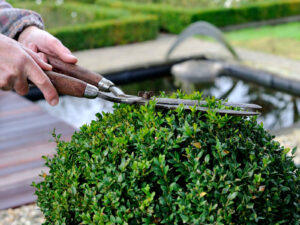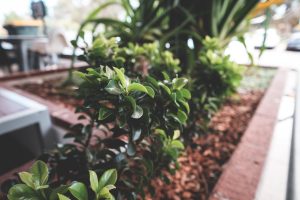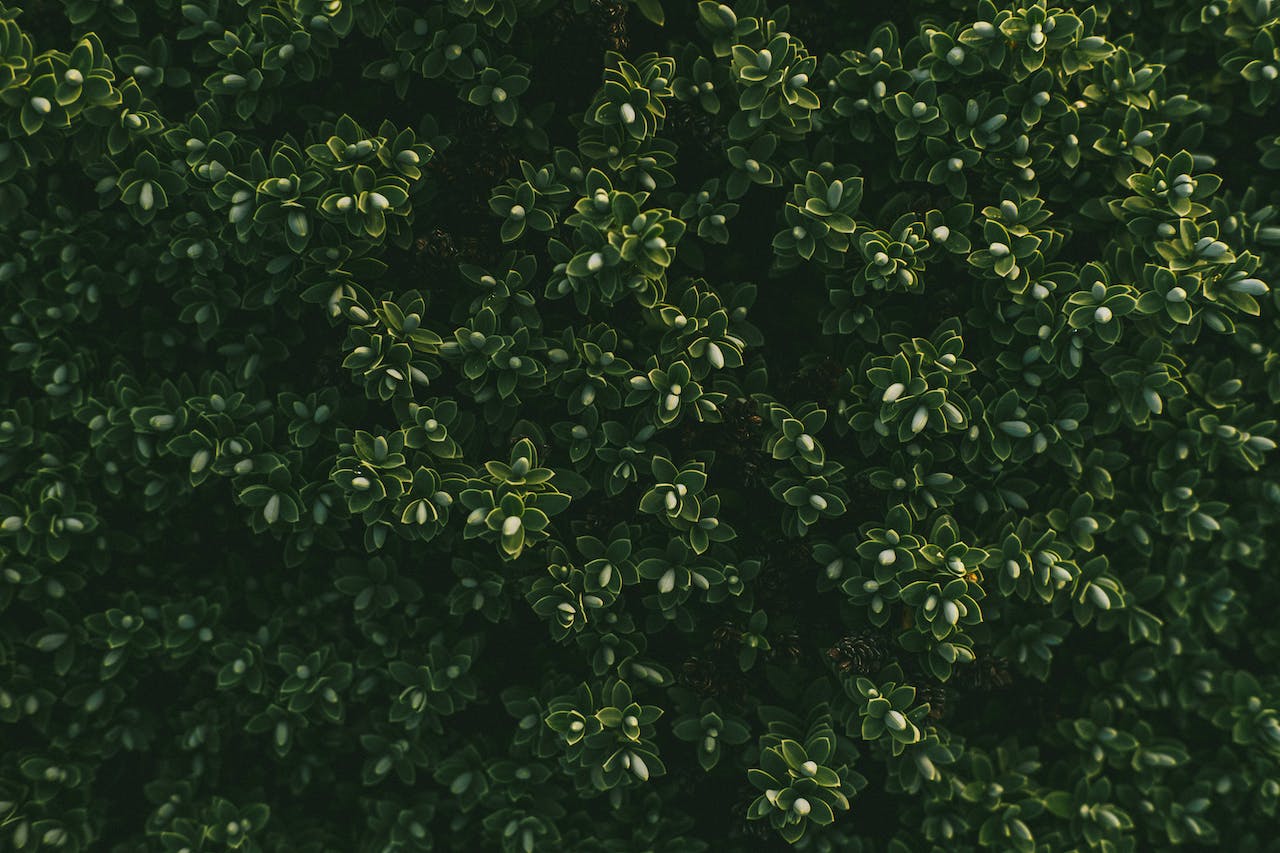The Timeless Elegance of Boxwood Shrubs: A Comprehensive Guide
In the world of landscaping, few elements bring as much timeless charm and versatility as boxwood shrubs. With their evergreen foliage, compact growth, and adaptability to various conditions, Boxwood shrubs have been a favorite among gardeners and designers for centuries. In this comprehensive guide, we delve into the fascinating world of boxwood shrubs, exploring their characteristics, cultivation, and the myriad ways they can elevate your outdoor space.
I. Introduction to Boxwood Shrubs:
- A. Definition and Origin:
- Boxwood shrubs belong to the Buxaceae family and have a rich history dating back to ancient civilizations. Originating in Europe, Asia, and Africa, they have been cultivated for ornamental and functional purposes for centuries.
- B. Characteristics:
- Boxwoods are known for their dense, evergreen foliage that retains its vibrant green color throughout the year. The leaves are small, oval-shaped, and tightly packed, creating a distinctive appearance.

II. Popular Varieties of Boxwood Shrubs:
- A. Common Boxwood (Buxus sempervirens):
- The most traditional variety, known for its upright growth and dark green leaves. It’s often used for formal hedges and topiaries.
- B. Japanese Boxwood (Buxus microphylla):
- Compact and versatile, this variety is well-suited for shaping into various forms. It has small, glossy leaves and is more tolerant of heat than some other varieties.
- C. Wintergreen Boxwood (Buxus sinica var. insularis):
- Notable for its excellent cold resistance, making it a preferred choice in colder climates. It has a dense, rounded growth habit.

III. Cultivation and Care:
- A. Sunlight and Soil:
- Boxwoods thrive in partial to full sunlight, with well-drained soil. They are adaptable to various soil types but prefer slightly acidic to neutral conditions.
- B. Watering:
- Adequate watering is crucial, especially during dry spells. However, boxwoods are susceptible to root rot, so it’s essential to maintain well-draining soil.
- C. Pruning and Shaping:
- Regular pruning helps maintain the desired shape and size of boxwoods. They respond well to shaping, making them ideal for formal gardens, hedges, and topiaries.

IV. Landscaping and Design Ideas:
- A. Formal Hedges:
- Boxwood shrubs are the epitome of formal garden design. Neatly trimmed hedges create a sense of structure and elegance, defining pathways and garden borders.
- B. Topiaries:
- Their malleable nature makes boxwoods perfect candidates for creating intricate topiary designs. From classic shapes to whimsical animals, the possibilities are endless.
- C. Container Gardening:
- Boxwoods excel in container gardening, adding a touch of greenery to patios, balconies, or entryways. They are particularly suitable for urban gardens with limited space.
V. Common Pests and Diseases:
- A. Boxwood Blight:
- This fungal disease can cause defoliation and affect the overall health of boxwoods. Proper spacing, adequate air circulation, and prompt removal of infected plants are essential preventive measures.
- B. Boxwood Leafminer:
- The larvae of this insect can cause damage to boxwood leaves. Regular monitoring and the application of insecticidal soaps can help control infestations.
VI. Conclusion on Landscaping:
In the grand tapestry of landscaping, boxwood shrubs stand as evergreen sentinels, weaving elegance and structure into outdoor spaces. Whether adorning a formal garden, shaping a whimsical topiary, or gracing a container on a city balcony, the versatility of boxwoods is boundless. With the right care and creativity, these shrubs continue to be a testament to the enduring allure of timeless greenery in our gardens. Consider incorporating boxwoods into your landscape, and let their classic charm transform your outdoor haven.
VII. Boxwood Maintenance Tips:
- A. Fertilization:
- Boxwoods benefit from regular fertilization to maintain their lush green appearance. Use a balanced, slow-release fertilizer in spring to provide essential nutrients.
- B. Mulching:
- Applying a layer of organic mulch around the base of boxwoods helps retain moisture, suppress weeds, and regulate soil temperature. Keep the mulch away from the plant’s trunk to prevent rot.
- C. Winter Protection:
- In regions with harsh winters, consider providing additional protection to boxwoods. This can include anti-desiccant sprays to reduce moisture loss and burlap wraps to shield against cold winds.
VIII. Boxwoods in Various Garden Styles:
- A. Formal Gardens:
- Boxwoods have long been associated with formal garden designs, where they create geometric patterns, define pathways, and add a sense of order and symmetry.
- B. Cottage Gardens:
- While boxwoods are traditionally linked to formality, they can also find a place in more relaxed cottage garden settings. Their versatility allows them to be shaped into softer forms that complement the informal aesthetic.
- C. Modern Landscapes:
- In contemporary landscaping, trimmed boxwoods bring a touch of classic elegance. Their clean lines and evergreen foliage provide a timeless backdrop that pairs well with modern architectural elements.
IX. Boxwoods in Seasonal Decor:
- A. Holiday Wreaths:
- Boxwood branches are a popular choice for crafting elegant and long-lasting holiday wreaths. Their dense foliage adds a touch of greenery that remains vibrant throughout the festive season.
- B. Seasonal Containers:
- Create visually striking seasonal containers by combining boxwoods with colorful annuals in spring and summer or incorporating seasonal accents like pumpkins and ornaments in fall and winter.
X. Sustainable Gardening with Boxwoods:
- A. Low Water Requirements:
- Boxwoods, once established, are generally drought-tolerant, making them a sustainable choice for water-conscious gardening.
- B. Long Lifespan:
- With proper care, boxwoods can live for decades, offering enduring beauty and reducing the need for frequent replanting.
XI. Conclusion: Embracing the Green Legacy:
In a world where garden trends come and go, boxwood shrubs stand resilient, weaving a green legacy that transcends time. From classical landscapes to modern urban havens, their adaptability and enduring charm make them a cornerstone of garden design. As you embark on your journey of landscape creation, consider the evergreen allure of boxwoods – a testament to nature’s timeless elegance.
Whether you’re a seasoned gardener or just beginning your green adventure, the versatility, and sophistication of boxwood shrubs make them an excellent choice. Plant, shape, and nurture these green companions, and watch as they transform your outdoor space into a haven of enduring beauty. The story of boxwoods continues to unfold, with each leaf whispering tales of resilience, elegance, and the perennial magic of nature.

